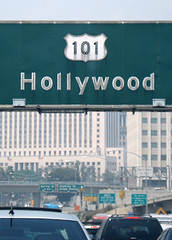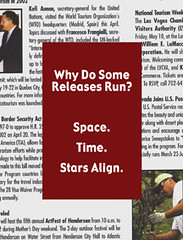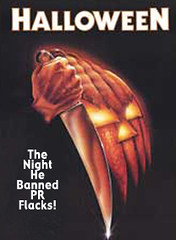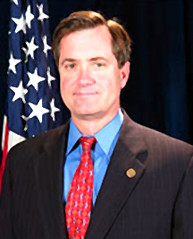
Lisa Wines, who pens of o my word, is as authentic as they come. The youngest of six children who moved from Philadelphia to Phoenix, she graduated a year early from high school and chose a life filled with drug smugglers, prostitutes, their attorneys, and other “interesting” people. Wines also knows about abuse.
“I have experienced different kinds of abuse in life, primarily a rape while in college, where I was held captive in a guy’s house for a couple days and then hospitalized,” says Wines. “It’s interesting that I didn’t write about my own experience. I guess I’m not ready for that.”
Instead, as one of 10,000 bloggers who participated in Bloggers Unite, a social awareness campaign organized by BlogCatalog, Wines decided to write about her friend Robert Miley, an artist in Arizona who developed an art workshop curriculum for abused and at-risk youth.
“I have known Robert Miley for years and have always been touched by his work with abused children,” she says. “I think art can be magically healing. People can express their emotions, rage, sadness, fear, through art, and get beyond the pain and move forward.”
Wines’ post received first place in the Blog For Hope Post Competition, sponsored by Copywrite, Ink. in cooperation with BlogCatalog. Among the prizes, Copywrite, Ink. will be donating $250 to Robert Miley’s Release The Fear in her name as well as proceeds from “Art Heals” T-shirts, which her post helped inspire. According to Wines, her post also represents the most she has done for Miley’s worthwhile endeavor.
“I had been self-absorbed for many years … working myself to death. I never seemed to have time for Robert’s or any other charity. But he would lure me in here and there,” she said. “I have helped him with minor writing tasks and have shown up at meetings and events. But I have never played a major role. I was very happy to finally draw attention to his work through my blog.”
While it doesn’t read like a new blog, o my word is relatively young to the blogosphere. Wines, a freelance commercial writer, started it in March as an essay blog that features observations and confessions about her life. Filled with little bits of wisdom from living an unconventional lifestyle, she shares anything and everything that happens to strike her. Often amusing and always straightforward, she also writes about her adventures as an American living in Paris
“I love my o my word blog, but have a love/hate relationship with my political blog,” she confesses. “Things are bleak in America today, so I get tired of bitching. Instead, I prefer reminiscing or telling stories about my life.”
In some ways, the Miley post in an exception, sparked by the Bloggers Unite campaign. Wines became interested in the campaign after reading how many bloggers were making a difference. She immediately thought of Miley.
“I think children need to feel safe, and then feel that they can be loved,” she says. “They need a way to express themselves and to shed the shame that is always associated with abuse.”
The six judges — two from BlogCatalog, two from Copywrite, Ink., and two who are not affiliated with social media — thought so too. Their decision to recognize Wines’ post was based on this program’s ability to help heal the pain associated with abuse. Although unrelated, Miley’s program is similar to “Gaining Your Voice Through The Arts,” a juried art show that highlighted artists who also use art as a means for healing in Greenwich, Connecticut.
Like Release The Fear, Gaining Your Voice focused on teaching people to transform their pain and suppressed emotions as an abuse victim into something else. By doing so, it helps abuse victims change the way they think about their experience and helps others to gain their voice as well.
It’s a solution — whether written in a blog or splashed across a canvas or captured in a photograph — that has been proven to work. Just ask Wines. Despite her own painful experiences, she still maintains an infectious sense of humor — the least of which is exemplified by her request for donations to buy some Depends. (Not really, but that’s what makes it funny.) Congratulations again, Lisa.





















